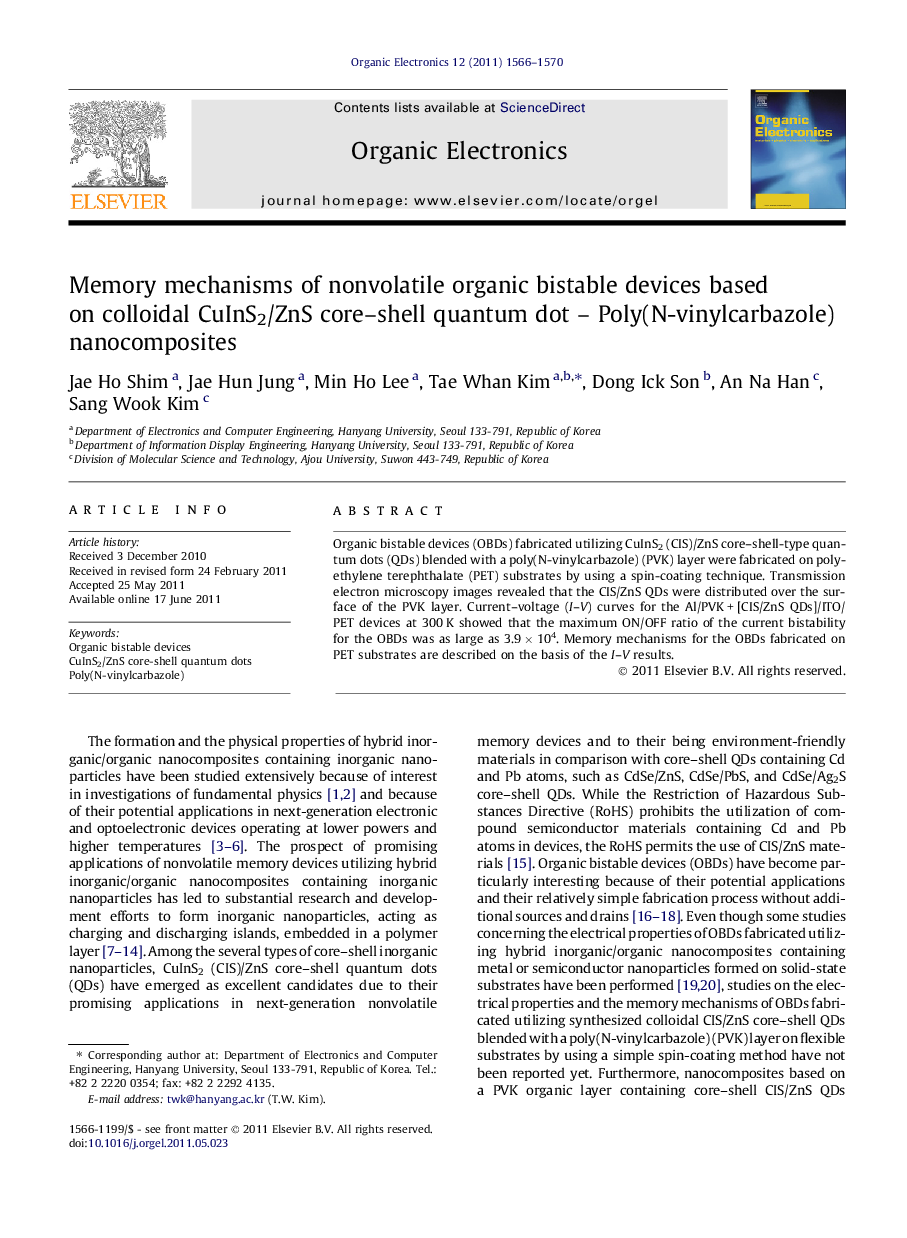| Article ID | Journal | Published Year | Pages | File Type |
|---|---|---|---|---|
| 1265307 | Organic Electronics | 2011 | 5 Pages |
Organic bistable devices (OBDs) fabricated utilizing CuInS2 (CIS)/ZnS core–shell-type quantum dots (QDs) blended with a poly(N-vinylcarbazole) (PVK) layer were fabricated on polyethylene terephthalate (PET) substrates by using a spin-coating technique. Transmission electron microscopy images revealed that the CIS/ZnS QDs were distributed over the surface of the PVK layer. Current–voltage (I–V) curves for the Al/PVK + [CIS/ZnS QDs]/ITO/PET devices at 300 K showed that the maximum ON/OFF ratio of the current bistability for the OBDs was as large as 3.9 × 104. Memory mechanisms for the OBDs fabricated on PET substrates are described on the basis of the I–V results.
Graphical abstractCurrent–voltage curves and cycling stress test for the Al/PVK + [CIS/ZnS QDs]/ITO/PET device. The I–V curves for the device clearly show current hysteresis behaviors, which are essential features of bistable devices. The “ON” and the “OFF” states correspond to relatively high-conductivity and relatively low-conductivity states, respectively. The maximum current ratio between the “ON” and the “OFF” states for the device at 1 V is as large as 3.9 × 104. The device without an applied voltage at an initial stage maintains an “OFF” state with a current below 10−6 A. The currents as functions of the number of cycles for the “ON” and the “OFF” states of the Al/PVK + [CIS/ZnS QDs]/ITO/PET device. A sequence of pulses lasting less than 1 ms was employed to confirm the memory endurance for the write/erase stress. An endurance larger than 5 × 103 ON/OFF switchings, together with a rewritable capability, is clearly observed. Even though a state fluctuation appears, the ON/OFF ratio in the device is always larger than 103.Figure optionsDownload full-size imageDownload as PowerPoint slideHighlights► OBDs based on CIS/ZnS core–shell-type QDs blended with a PVK layer were fabricated on PET substrates. ► TEM images revealed that the CIS/ZnS QDs were distributed over the surface of the PVK layer. ► The maximum ON/OFF ratio of the OBDs was as large as 3.9 × 104 and the cycling endurance of the OBDs was larger than 5 × 103. ► The fitting data of the I–V curves demonstrated that the carrier transport mechanisms of the devices. ► Writing process were attributed to the TE and the SCLC and the erasing process were related to the FN tunneling process.
